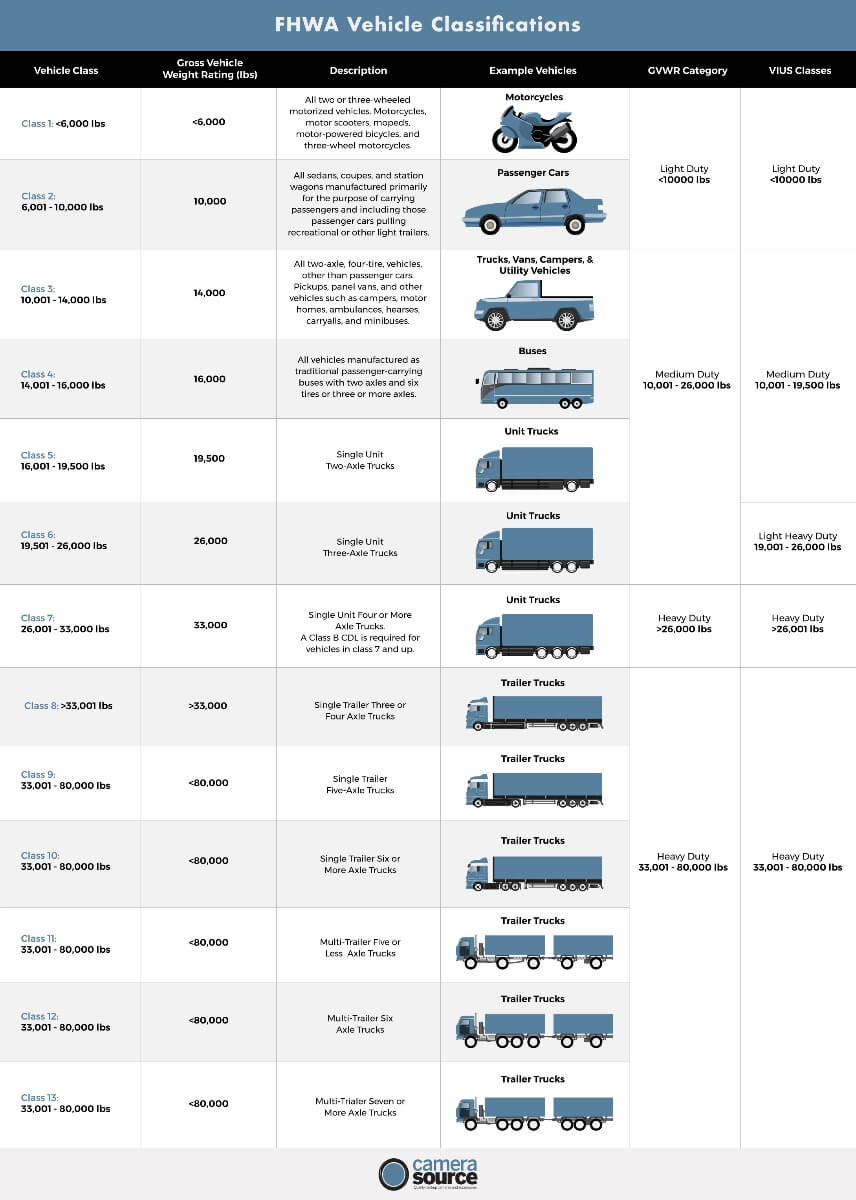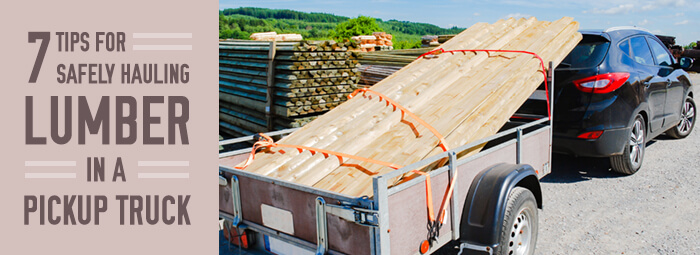SUVs are popular because of their cargo capacity, durability, and go-anywhere attitude. While it seems logical that large SUVs offer advantages without many negatives, many SUVs have a payload capacity that’s way lower than many buyers assume. When an SUV gets overloaded, the chance of it rolling over increases dramatically. This is why it’s important to know your SUV’s limits and treat it accordingly.
For ease of use, if your car was built after September 2004, the tire label on the doorjamb of your vehicle will tell you what the maximum combined weight of occupants and cargo is for all vehicles with a GVWR (Gross Vehicle Weight Rating) of 10,000 pounds or less.
In addition to their load capacity and being more prone to rollover accidents, it’s important to be aware of their other limitations, including their blind spots. These blindspots make a collision or accident more likely to occur when reversing the SUV. That’s why you need a backup camera.
As the providers of high quality backup cameras, Camera Source is familiar with capabilities of SUVs and how to make driving them safer. You can start by being more aware of your vehicle and its surroundings by installing a backup camera. Keep reading for more information on how to determine your SUV’s load capacity and how to drive it safely, or start browsing our inventory of backup cameras for your SUV.

Why You Should Never Overload Your SUV
There are many reasons to not overload your SUV. Here are just a few of the potential risks:
- Bulging wheels and tire blowout
- Reduced brake effectiveness
- Suspension and traction control is compromised at highway speeds
- Sudden steering can result in a rollover
- Gas costs for extra hauling weight
- No insurance payout in the event of an accident
But how do you determine if your SUV is overloaded? Make sure the weight of your payload is within your SUV’s payload capacity.
Terms to know When Determining Load Capacity
When determining the load of your SUV, there are a few terms that are helpful to know.
Payload & Payload Capacity
Payload is simply the amount of weight in the bed and the cabin combined, and the payload capacity is the maximum amount of weight a vehicle can safely carry.
How to Calculate Payload Capacity
A truck’s payload capacity refers to the maximum amount of weight you can safely add to a truck’s cargo area in addition to its empty weight (or curb weight). Additionally, if you’re pulling a trailer, the payload also includes the weight of the trailer pushing down on the trailer hitch, which is known as tongue weight.
The Difference Between Payload & Towing Capacity
Payload capacity is the amount of weight a vehicle can carry, and towing capacity is the amount of weight it can pull.
Towing capacity refers to the maximum weight that a truck can tow after factoring in the weight of the truck and any cargo. Subtracting the curb weight from the GCVWR gives you the vehicle’s towing capacity.
Manufacturers will stress that you should never exceed your vehicle’s towing capacity. For safety reasons, it’s best to never come within 10% of that total. Automakers often refer to carrying weight in the bed of a truck as hauling to distinguish it from carrying weight in a trailer or towing.
GVWR
This term stands for Gross Vehicle Weight Rating. This is the amount the vehicle and payload capacity equal combined— ultimately the most a vehicle can carry safely. So, if you have a vehicle with a GVWR of 2,500 lbs, and the curb weight is 2,000lbs, you have 500lbs of payload capacity.
The U.S. Department of Transportation (DOT) groups classes of trucks into three categories based on GVWR:
- Classes one and two are considered light-duty trucks
- Classes three through five are medium-duty trucks
- Class six and above is a heavy-duty truck
The U.S. government classifies trucks into 8 weight classes based on the maximum GVWR:
- Class 1 6,000 pounds
- Class 2 10,000 pounds
- Class 3 14,000 pounds
- Class 4 16,000 pounds
- Class 5 19,500 pounds
- Class 6 26,000 pounds
- Class 7 33,000 pounds
- Class 8 Anything higher than 33,000 pounds
Your truck’s mass constitutes part of the GVWR, as does the load you carry. By subtracting the curb weight from the GVWR, you will find out how much additional weight your truck can handle. Knowing where your vehicle falls within these categories can make it easier for you to determine how much payload your vehicle can safely transport.
Curb Weight
The curb weight of your truck is how much the vehicle weighs when empty. When determining maximum payload and towing capacity, you need to know the curb weight, which includes a full tank of gas and topped off fluids, but no passengers or cargo.
Tongue Weight
This measurement indicates how much weight a tow load exerts on the truck’s tongue. Tongue weight only accounts for an empty trailer, you want to make sure you add cargo mass in as well.
GCVWR
Not to be confused with GVWR, GCVWR stands for gross combined vehicle weight rating, which is the total combined weight of your loaded truck and trailer. You need the GCVWR to calculate towing capacity.
GAWR
Gross Axle Weight Rating is the maximum amount of weight one axle can support. Make sure to be mindful of this when placing a heavy load over an axle.
GTW
Gross Trailer Weight is the total weight of your trailer and its cargo. If you were to place the fully loaded trailer on a scale, the resulting measurement would be the GTW. If your GTW exceeds your vehicle’s towing capacity, you will not be able to move it safely.
How Safely Increase Payload Capacity
You can increase your payload capacity, but it’s important to be careful, there’s a lot of bad information around doing this. Payload capacity is the sum of many different parts of a vehicle, and upgrading a single one doesn’t suddenly make the others stronger.
Reducing the overall weight of the vehicle is the best bet. If you’re just needing a few extra pounds, removing the back seats can be a helpful trick.
In the worst-case scenario, rent a larger vehicle. It’s not worth compromising the integrity of the vehicle, or risking your life and the lives of others, to increase your vehicle’s carrying capacity.
Many SUV manufacturers, responding to consumer fears, have developed safer vehicles using electronic stabilizing technologies. These systems use computer sensors to cut engine power and brake individual wheels when they sense that the vehicle is losing control. While this won’t increase the overall payload capacity of your vehicle, it will make a heavy load safer to drive around with.
Before you load up an SUV, make sure you know your vehicle and that it’s prepared for the trip. Know how much weight the vehicle can safely transport, how to use the tailgate, and make sure it’s equipped with all the necessary safety features, like electronic stability control and backup cameras.
Backup cameras are great technology to help you be more aware of your surroundings and remain safe. Get in touch with Camera Source today, to see how you can start making your drive safer.








